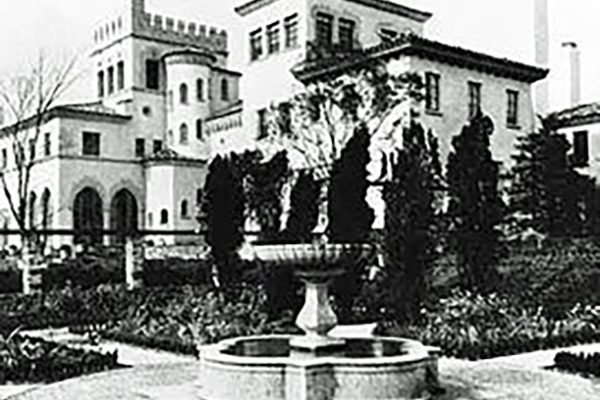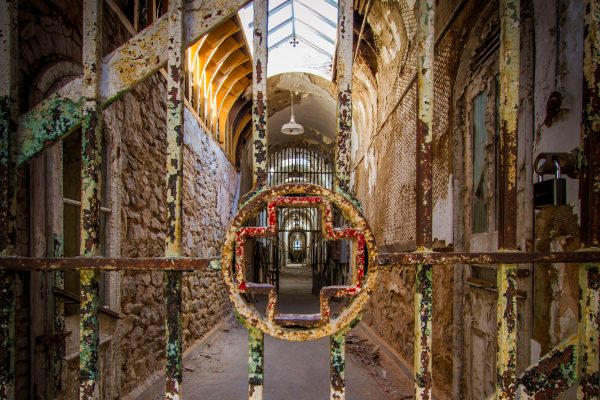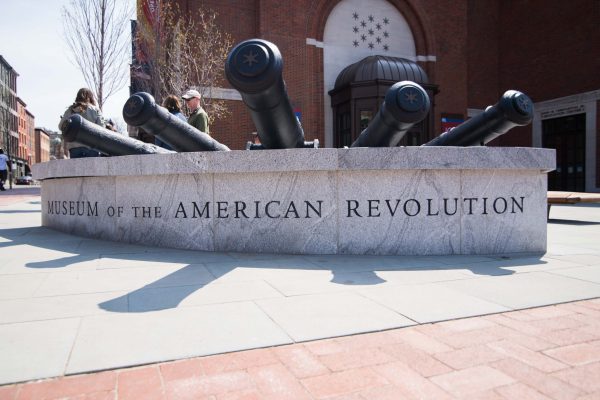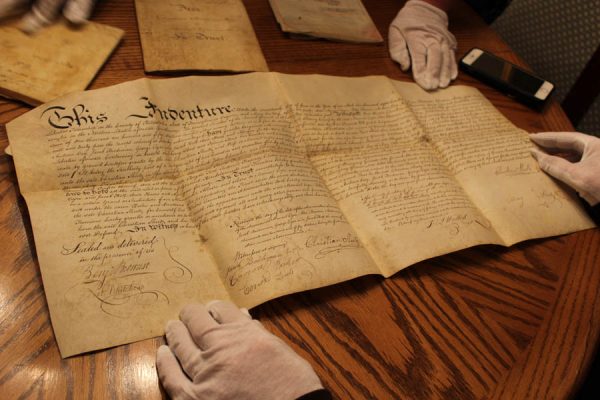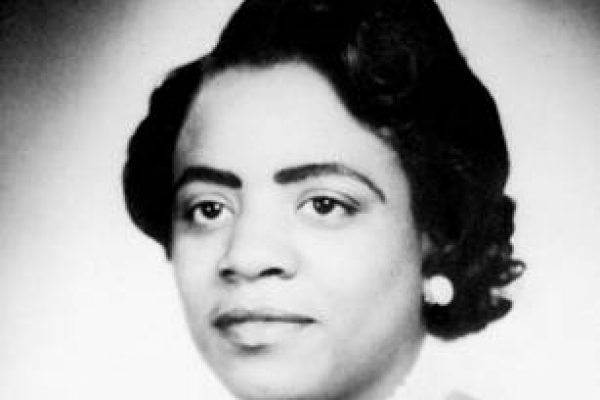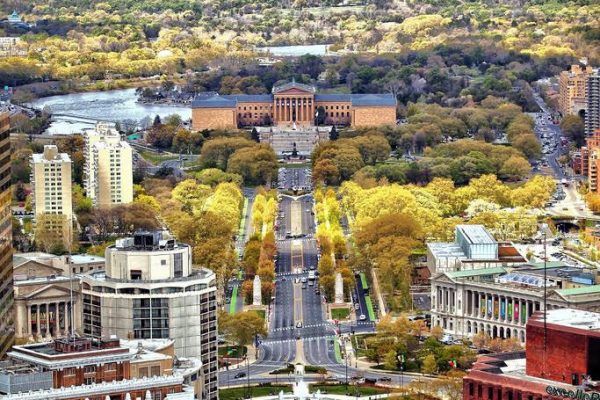The year is 1797 and somewhere on Spruce Street in a tiny rented room sits an ailing 75-year-old man. The roomer has a nurse who comes to visit him during the day because his condition is not good. Outside his window the man can hear the bustling sounds of the New Republic, although it’s impossible to know if the robust voices he hears in the streets offer him any consolation.
Who is this roomer who lives like an abandoned castaway? Is he a debauched derelict who wasted his life in intoxicating pleasures at the expense of career and family? Or is he someone on the receiving end of karma, as so many people alive today like to say about people who seem to bring about their own demise?
The nurse who cares for the man knows his history. No doubt she spends plenty of time listening to his stories and offering her condolences whenever appropriate. “Why did a city you did so much for turn its back on you? Why is Philadelphia ignoring one of its greatest sons?” I can hear her asking.
Imagine the deplorable confinement of living in a rented room in the house of the widow of one of your former business partners. Such is the case with our penniless roomer. He is completely dependent on the financial kindness (read: charity) of the Carpenters’ Company. Only God knows that when he turns 76 he will be dead, and that the Carpenters’ Company will pay all his funeral expenses. Just like a pauper.
Day in and day out, the nurse listens as roomer Thomas Nevell recounts his life as an architect. He tells her how he designed one of Philadelphia’s greatest mansions, Mount Pleasant, a house that so impressed John Adams that when he visited Mount Pleasant in 1775, he said it was “the most elegant seat in Pennsylvania.” With its classical design, brick quoins and exquisite interior woodwork, Mount Pleasant was designed by Nevell for Scottish sea captain John Macpherson (1726-1792) who lost one arm during his high seas buccaneer days.
The house has since become one of Philadelphia’s most famous historic homes. In connection with that, the house’s main claim to fame was that in 1779, Benedict Arnold purchased it as a wedding gift for his new wife, Peggy Shippen. Shippen was the daughter of one of Nevell’s former clients. She was a beautiful woman despite her mercurial and manipulative personality. Mr. and Mrs. Arnold never actually lived in Mount Pleasant because Benedict was appointed to a military post at West Point immediately after the purchase.
Assisted living nurses generally like to get life stories, so it’s likely that our nurse got Nevell to talk about his childhood. “Tell me how you became one of Philadelphia’s most famous personalities,” she undoubtedly said.
Nevell tells her that he was born in 1721. An only child, he was orphaned at age nine. Then he recounts the story of how he was sent off to foster families until he was finally apprenticed to architect Edward Whooley. This stroke of good fortune had him by Whooley’s side during the latter’s 20-year project designing and building the Pennsylvania State House, the largest building in Colonial America at that time.
Nevell tells her that he grew up to become a fairly well-known architect and carpenter. Success was his in 1781 when he was awarded the contract to design and construct a new roof and steeple for Independence Hall. The plum job put him on the list of 18th century people to watch. Life was good for the little orphan who was also creating gun carriages and coffins for clients while his reputation as “an ingenious house carpenter” grew. At this time Nevell had no money issues. He lived in a simple yet formidable house at 4th and Pine Streets.
Nevell explains how he rose to the top of his profession and that he made enough money to become the second largest donor for the building of Carpenters’ Hall. He mentions the year 1771 when he founded the nation’s first architectural school. He relates how with his business partner, John Lort, he built a two-story wooden classroom behind his 4th Street house. An ad for the school appeared in the Pennsylvania Gazette, the biggest newspaper in the colonies:
“Whereas I have been requested by sundry persons, anxious to improve themselves in the art of architecture, to undertake the teaching so necessary a mystery as the carpenters’ business, I will take upon me to instruct a small number of youth or others…”
He tells the nurse his life changed in 1773 when the British imposed heavy taxes on tea. In the city of Boston, the tea tax created the Boston Tea Party during which colonists dumped boxes of imported English tea into the bay. Philadelphia’s reaction to the new taxes was not so dramatic but it was significant enough to get him to walk away from architecture and devote himself to the Revolution. He describes how he closed his architectural night school and was soon under contract from the Continental Army and Navy to make gun carriages. He describes how he was put in charge of constructing underwater river defenses, called chevaux-de-frise, and how within a year’s time he went from being a private to a lieutenant colonel of the Philadelphia Artillery Battalion.
I can imagine Nevell’s nurse fidgeting in her chair and drumming up the courage to ask the ailing architect about the Imperial-style arch he designed that spanned 6th and Market Streets. The arch was an exercise in Roman Empire pomposity, built to celebrate the end of the Revolutionary War and the formation of the United States of America.
The grand arch enticed none other than Charles Wilson Peale to decorate it after covering the whole thing in canvass and then to illuminate the whole thing in candlelight. As Carl G. Karsch writes on History.org, “A spectacular result was predictable. Fire turned the arch into a blazing torch, igniting fireworks including rockets in an explosive grand finale to the Revolution.”
But an even more daring question from the nurse is how our hero architect met the Black Widow Spider, or Mrs. Weed, a woman who had a house at Front and Arch Streets where she lived with her teenage son, George. Who knows what Nevell was thinking when he gave his heart and married Mrs. Weed, widowed three times, and then allowed his new wife to keep the terms that left her house in trust for George when he turned 21, despite the fact that Nevell had already paid all the taxes on the property.
Love may be blind, but when it leads one into poverty and personal disarray it becomes the kind of love that should be shelved like aged lima beans.
When Mrs. Nevell (nee Weed) died in 1790, the full brunt of Nevell’s mistake came back to haunt him because George opted to live alone, meaning that Nevell had to find another place to live. Misfortune struck again when the city of Philadelphia failed to renew Nevell’s contract as a “street regulator.”
“Mrs. Weed’s very name should have been a warning to you!” I can hear the kindly nurse saying to Nevell, now asleep in his chair, his mind at rest but the frown on his face indicating that the poison from the Poison Widow had thoroughly done its job. •
